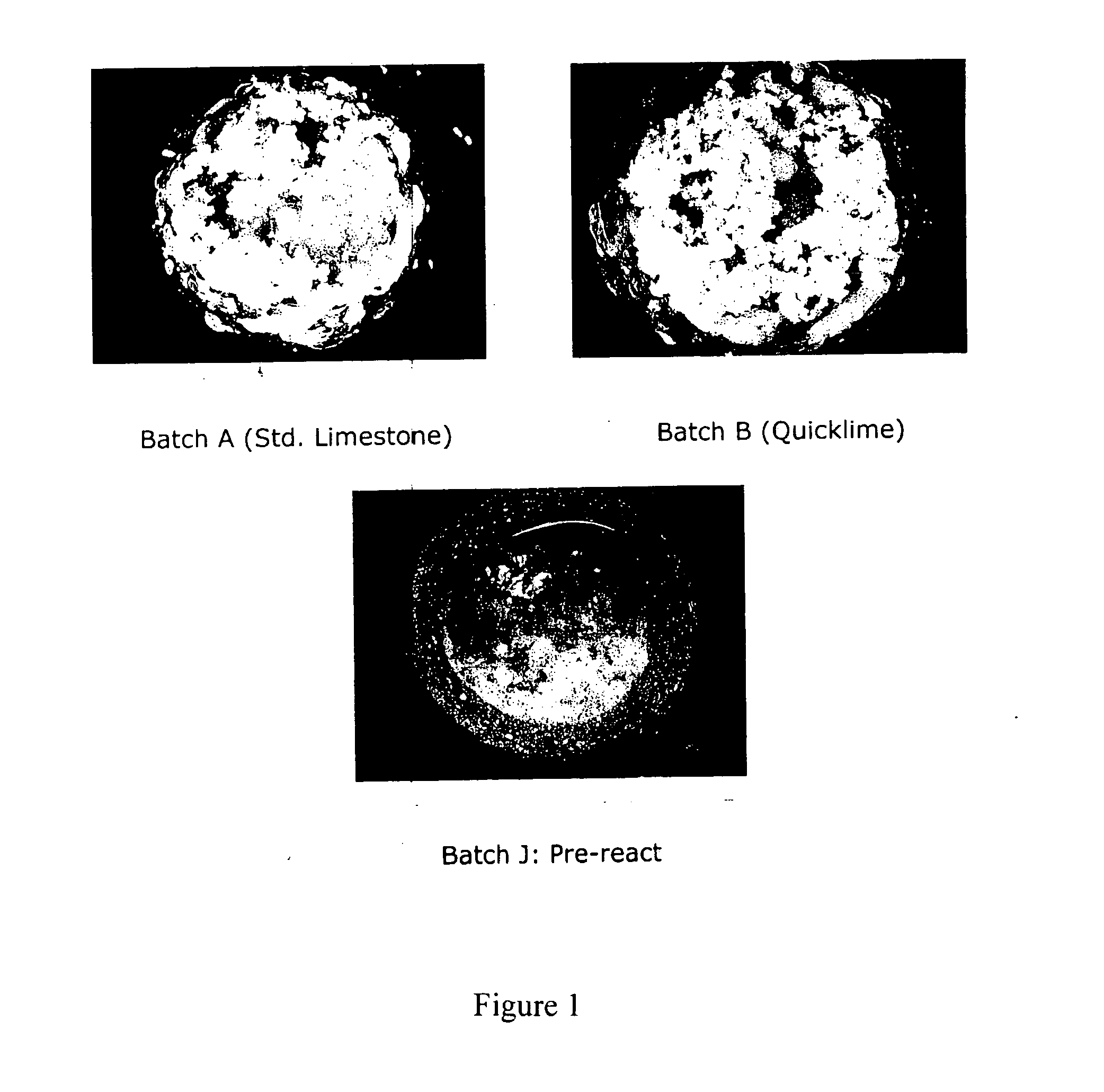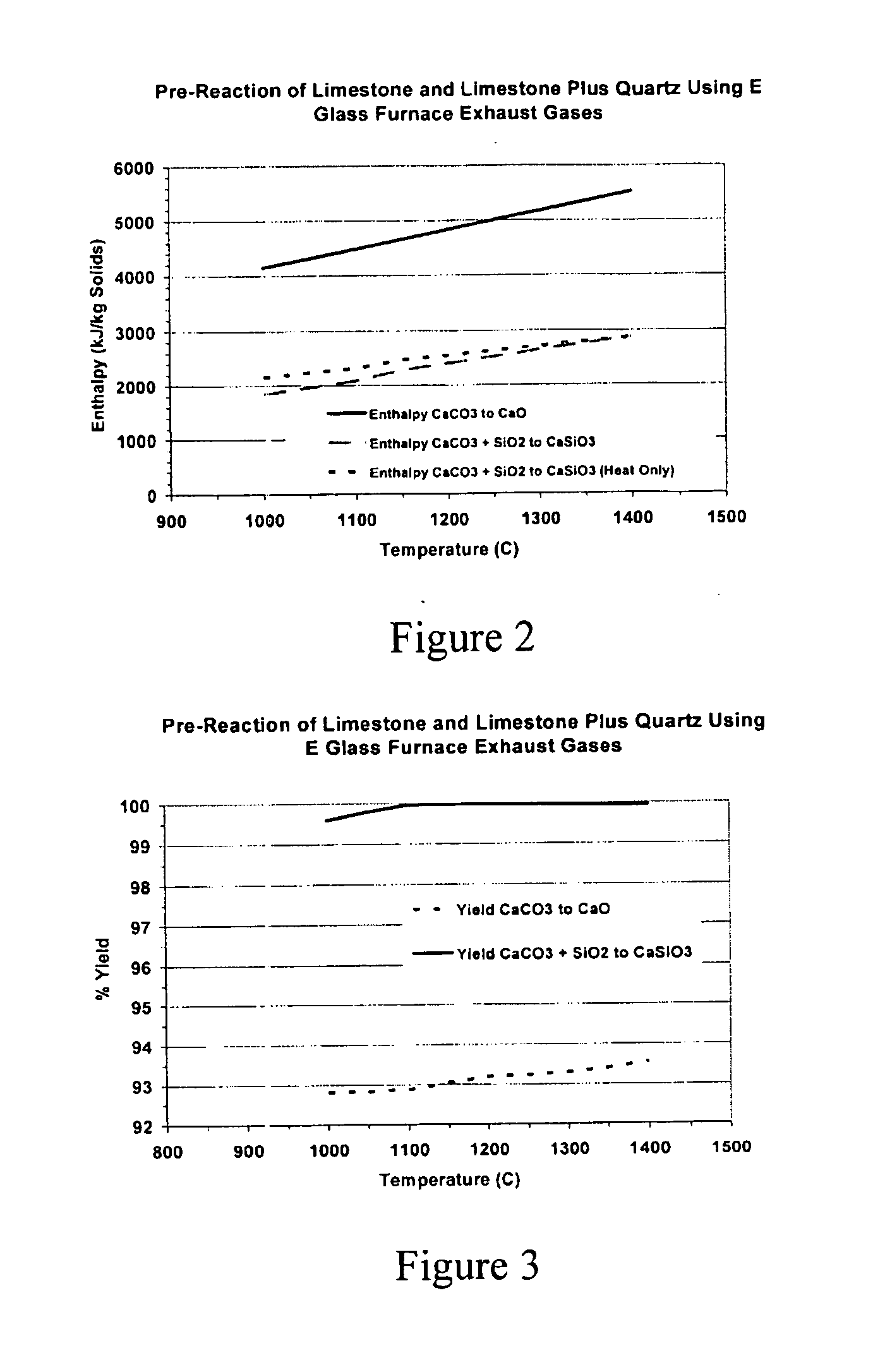Method for making glass fibers
a glass fiber and manufacturing method technology, applied in the field of manufacturing glass fibers, can solve the problems of fiber breaking during production, increasing the cost of fiber production, and the most refractory component of the glass fiber, so as to reduce brittleness and breakout, and achieve significant energy savings
- Summary
- Abstract
- Description
- Claims
- Application Information
AI Technical Summary
Benefits of technology
Problems solved by technology
Method used
Image
Examples
examples
[0024] A series of samples were prepared having the target composition reflected in Table 2 below using the batch variations listed in Table 3:
TABLE 2Target composition of glass used in batch variation studiesOxide ComponentWt. %SiO255.0Al2O313.5B2O35.0Fe2O30.25TiO20.55CaO22.3MgO2.0Na2O1.3K2O0.1
[0025]
TABLE 3Batch variations for glass composition in Table 2.BATCH COMPOSITION (BY WEIGHT)ECaHILABCDSilicateFGLime-Ca-JKCa-LimestoneQuick-CaVolcanic& VolcanicQuartz-Quartz-stone / Silicate / Quartz-Quartz andSilicate / Raw material(Baseline)limeSilicateGlassGlassfree #1free #2SlagSlagfree #3Clay freeFeldsparQuartz (flint)31.3%35.9%15.2%22.6%8.5% 0% 0%22.3%5.7% 0% 0%19.9%Kaolin Clay28.1%32.3%32.0%23.0%28.2%26.4% 0%22.7%26.0%26.0% 0% 0%BD Lime3.4%4.3%3.9%3.3%3.8%3.7%4.3%2.8%3.1%3.1%4.3%4.4%Borax4.7%5.2%5.2% 0%1.5% 0% 0% 0% 0% 0%1.1%1.1%Boric Acid3.2%3.9%3.6%7.3%6.9%8.2%8.6%7.3%8.2%8.2%7.7%7.8%Salt Cake0.2%0.2%0.2%0.2%0.2%0.2%0.2%0.2%0.2%0.2%0.2%0.2%Limestone29.1% 0% 0%28.7% 0% 0%...
PUM
| Property | Measurement | Unit |
|---|---|---|
| weight percent | aaaaa | aaaaa |
| weight percent | aaaaa | aaaaa |
| weight percent | aaaaa | aaaaa |
Abstract
Description
Claims
Application Information
 Login to View More
Login to View More - R&D
- Intellectual Property
- Life Sciences
- Materials
- Tech Scout
- Unparalleled Data Quality
- Higher Quality Content
- 60% Fewer Hallucinations
Browse by: Latest US Patents, China's latest patents, Technical Efficacy Thesaurus, Application Domain, Technology Topic, Popular Technical Reports.
© 2025 PatSnap. All rights reserved.Legal|Privacy policy|Modern Slavery Act Transparency Statement|Sitemap|About US| Contact US: help@patsnap.com


